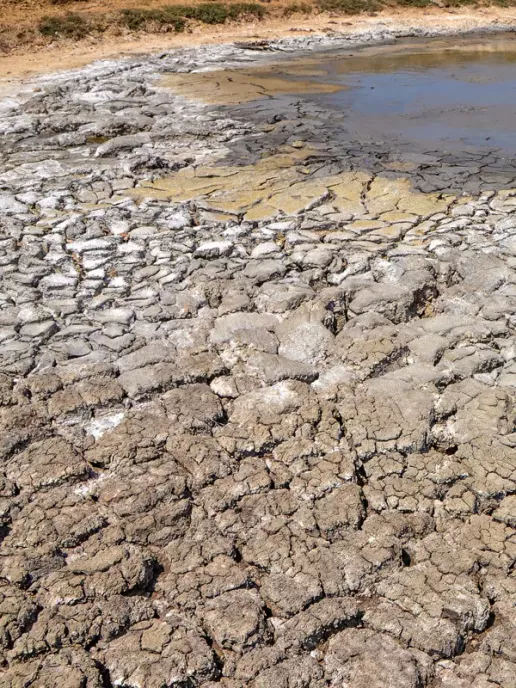
Volcano Karabetova Sopka, or Karabetka, is clearly visible if you drive along the road to Taman. Karabetova Sopka is known as the largest active volcano on the Taman Peninsula, on the Azov Sea. The height of the hill is one and a half hundred meters, and from afar it looks like hundreds of the same hills of the Taman Peninsula. If you climb the Karabetova hill, you can see herds of sheep and goats grazing on it, a small lake overgrown with reeds, to which cranes and other birds fly in the summer. And only after examining the entire hill, you can find out that in fact it is really a volcano.
From the side of the Taman farm, a volcanic cone is visible, located three hundred meters from the road, fresh mud pouring out of the crater. This cone is growing every year. Volcano eruptions occur with a period of fifteen to twenty years, within a century volcano Karabetova Sopka erupts at least five times. Such large eruptions are accompanied by a strong explosion and a roar that is heard far in the vicinity of the volcano. A strong impression is made by the oval-shaped crater plateau, about one and a half kilometers long and a little less than a kilometer wide.
Around Karabetova Sopka there are many lakes with clear water, which were formed in old craters, as well as lakes with mud that flows in streams from the volcano. Mud erupting from the craters of the Karabetova Sopka volcano, according to scientists, has special healing properties. The volcano is interesting from a scientific and educational point of view and was recognized as a natural monument back in the seventies of the last century.